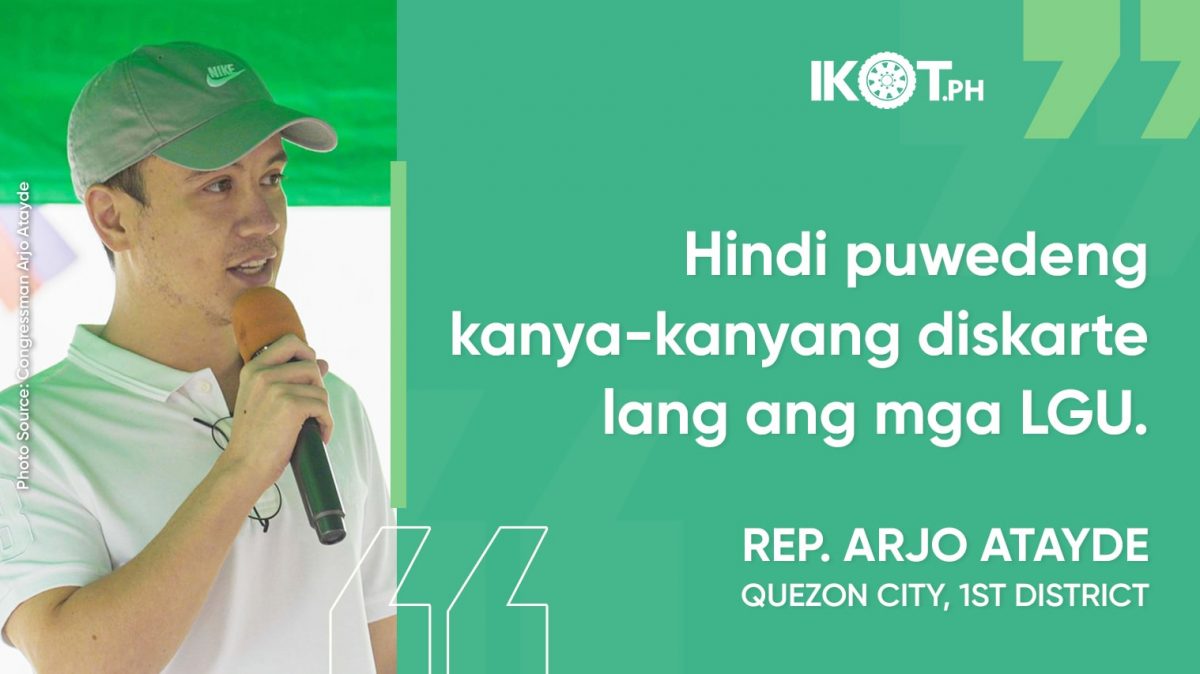Quezon City First District Representative Juan Carlos “Arjo” Atayde on Sunday called for a comprehensive, NCR-wide flood management strategy following days of heavy rainfall that inundated many parts of Metro Manila.
“The flooding we’ve seen in recent days makes one thing very clear: this is not just a QC District 1 problem, this is not just a Quezon City problem—it’s a Metro Manila problem,” Atayde said.
According to the second-term lawmaker, solving the capital’s long-running flood woes will require close coordination among national agencies and local governments in the region, as well as a substantial investment that considers the long-term benefits instead of the short-term costs.
“When Metro Manila floods, the whole country suffers.”
“We cannot solve this piecemeal. Kailangan talaga ng buong-lungsod na solusyon. Hindi puwedeng kanya-kanyang diskarte lang ang mga LGU, dahil konektado ang mga kalye, kanal, estero, at ilog natin,” Atayde said.
The legislator pointed out that Quezon City alone shares borders with Manila, Caloocan, San Juan, Marikina, Pasig, and even the municipalities of Rodriguez and San Mateo in Rizal—showing just how interconnected drainage systems and waterways are in Metro Manila and nearby areas.
“My grandparents faced this problem. Now we’re facing this problem. I don’t want my grandchildren to live through this problem as well. That’s why we need to take bold, unified action now.”
Atayde emphasized the cost of inaction given the national center’s critical role in the Philippine economy.
“NCR accounts for more than 30 percent of the country’s gross domestic product. When Metro Manila floods, the whole country suffers. Productivity drops, businesses lose income, and workers can’t get to their jobs. When the capital is paralyzed, the entire nation feels it,” stressed the solon.
“This is not just a Quezon City problem—it’s a Metro Manila problem.”
He urged agencies like the Department of Public Works and Highways (DPWH), Metro Manila Development Authority (MMDA), Department of Environment and Natural Resources (DENR), and the Department of the Interior and Local Government (DILG) to work closely with Metro Manila’s LGUs to align and fast-track flood control efforts.
He added that climate change and continuing urbanization have made flooding a more urgent and complex problem that cannot be addressed with short-term or localized projects alone.
“Sa QC may plano na, but If we want to solve this once and for all, we need a master plan for the whole of Metro Manila. That means more investment in infrastructure, stricter enforcement of environmental laws, and a unified approach to land use and drainage systems,” said Atayde.
Atayde vowed to continue pushing for better flood mitigation measures in Congress and said he is open to working with fellow Metro Manila legislators to secure funding for a more ambitious, region-wide approach.
“People are tired of the same cycle—umuulan, bumabaha, tapos pag-naarawan na, nakakalimutan. We need to break that cycle. We need to start looking for a serious solution now.”



